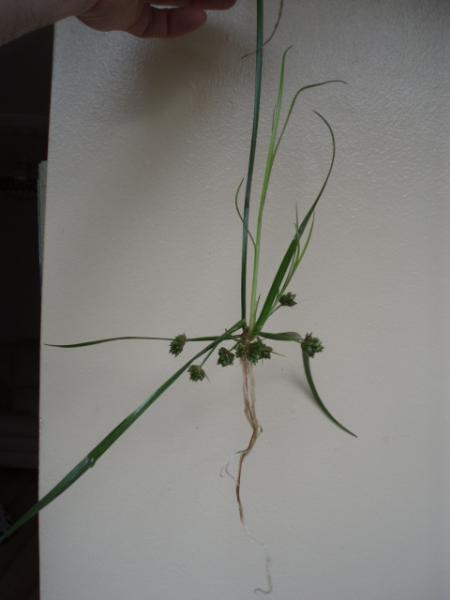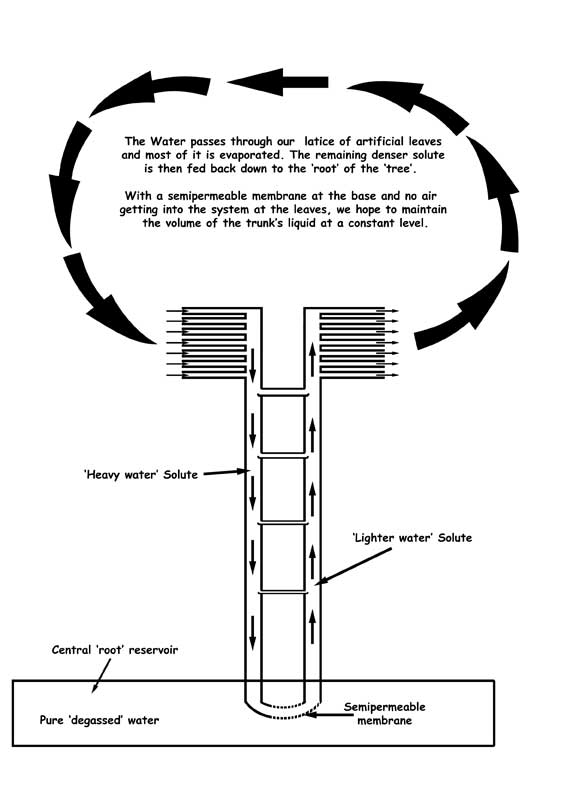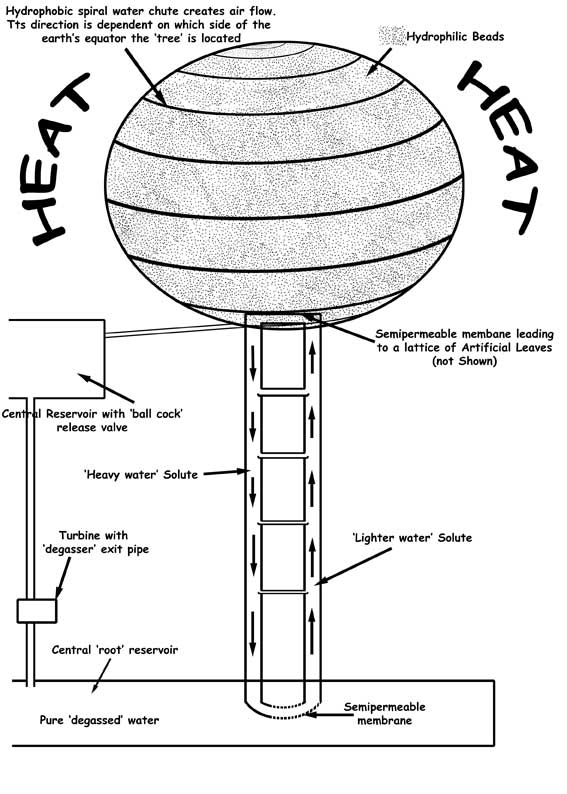 Inclined Bed Therapy: Sleeping Inclined To Restore and Support Your Health For Free. Fascinating Science, Discovery, History and Medical Research In Circulation And Posture, by Andrew K Fletcher. Read the Success Stories. Check the Forum.
Inclined Bed Therapy: Sleeping Inclined To Restore and Support Your Health For Free. Fascinating Science, Discovery, History and Medical Research In Circulation And Posture, by Andrew K Fletcher. Read the Success Stories. Check the Forum.
How do Trees Really lift Water to their Leaves?
- Andrew
-
 Topic Author
Topic Author
- Offline
- Moderator
-

Gravity, Learn to live with it, because you can't live without it!
Please Log in or Create an account to join the conversation.
- Andrew
-
 Topic Author
Topic Author
- Offline
- Moderator
-

It still doesn't explain anything that wasn't better explained before.
And I have too little free time to go round the houses on this one with you. Again.
On second thoughts, I'm a sucker for an obvious explanation...
You have added n mL of a denser solution to your dilute solution. Say the density is 2 g/mL rather than 1 then thats added n g extra weight to the "down" arm.
All the water in the "up" and "down" arms is balanced from one side to the other so say your max tube height is 20 m and you inject 10 mL salt solution (weight 20 g), you've just aquired the ability *by siphoning* to lift 10 g, and therefore 10 mL water 20 m up. If the surface of the water under your your "down" arm were 1 m higher up than the surface of the water under your "up" arm I'd expect to see you siphon 200 mL water. If they're only 10 cm different in height it would be 10 times that, so 2 L water. If they were at the same height limiting factors would be things like friction as you're not actually lifting any water that isn't counterbalanced by water on the other side going down.
I can't see the heights of the containers on the Brixham cliffs experiment, but the scaled down version seems to show about 2 mL salt solution, so maybe 2 g of weight falling maybe 1 m, and two containers at near-as-dammit the same height (say 1 cm different), and maybe 3 mL water transferred across.
So you've got enough energy out of your SIPHON to move 2 mL water up 1 m (OK, maybe a bit less, depending on how concentrated your salt solution is) but you're actually lifting about 4 mL up about 1 cm, using maybe 2 % of the energy available from the conventional-physics based explantion in terms of a siphon.
Gravity, Learn to live with it, because you can't live without it!
Please Log in or Create an account to join the conversation.
- Andrew
-
 Topic Author
Topic Author
- Offline
- Moderator
-

To activate this flow system all that is required is one grain / crystal of salt or sugar in one side, this induces the water filled loop of tubing to circulate. Even half a single crystal would do it. If you look at the other video showing salt crystals dropping into a clear water filled container you can see the flow generated by individual falling crystals as they dissolve, the sunlight shows the current created by this system.
there is no height difference between either of the bottles, the tubes are placed at the bottom of the two bottles. The recipient bottle overflows, the donor bottle level goes down rapidly as water is transferred from one vessel to the other, the displaced water = many times the volume of the added salt solution and should equate to the contents of the donor side of the tube. Which incidentally can be much larger in diameter than the downward flowing side. I have used an additional juxtaposed tube in the donor side to prove this capability and it runs perfectly. I did this to show that the flow is capable of delivering sufficient sap to the leaves to allow for the huge evaporation, which is known to take place at the leaf.
Changing the height of the arms as you put it at 24 metres does not induce a flow through siphoning. Possibly, the elasticity of water prevents this causing the bead of water to break and then water in both sides of the tube irrespective of the differences in levels will fall to the 10 metre level and the space above the water levels is vacuum.
This flow is different from a siphon effect. Because the water molecules are connected and under tension, by cohesion, the first denser molecule descends causing a chain reaction along the entire tube which drags all of the other molecules around much the same as if the water bead were made of elastic.
Andrew
Gravity, Learn to live with it, because you can't live without it!
Please Log in or Create an account to join the conversation.
- Andrew
-
 Topic Author
Topic Author
- Offline
- Moderator
-

Cyperus alternifolius
Take a stem of this plant approximately 6-8 inches place it upside down in a beaker / vase of water and ignore for around 2 months. The roots begin to grow from the crown of the leaves, followed by the ascending leaves from the developing root crown. Gravitropism is the term used to explain how plants and trees determine the correct orientation in relation to gravity. However, I believe that the migration of denser solutes to the leaf crown due to the plant being kept upside down plays a very important part in this process.
Gravity, Learn to live with it, because you can't live without it!
Please Log in or Create an account to join the conversation.
- Andrew
-
 Topic Author
Topic Author
- Offline
- Moderator
-

Andrew, Rosy and Dave, interesting dicussion, thought you guys might like to check out these papers on the subject of trees and osmosis.
arxiv.org/ftp/physics/papers/0305/0305011.pdf
www.fasebj.org/cgi/content/full/13/2/213#F4
Gravity, Learn to live with it, because you can't live without it!
Please Log in or Create an account to join the conversation.
- Andrew
-
 Topic Author
Topic Author
- Offline
- Moderator
-

Have you anything to add regarding points you have picked up on within this thread?
Kind regards
Andrew
Gravity, Learn to live with it, because you can't live without it!
Please Log in or Create an account to join the conversation.
- Andrew
-
 Topic Author
Topic Author
- Offline
- Moderator
-

Andrew,
Apologies for my tardiness, been a bit busy as of late, I've been thinking about trees and their ability to lift water for a long time now.
I've been working with my material science students on creating an artificial tree encased in a glass-like sphere to lift water over 300 meters.
Our goal is to take energy from the sun in the form of heat to create electricity. Our basic design involves several of these 'trees' releasing the water they collect at the bottom of their glasslike domes into a central reservoir.Once the reservoir reaches a predetermined level, the water is released, passes through a turbine before being deposited in another reservoir under their 'roots'. This is a complete closed system.
Obviously there has been a lot of interesting problems to overcome!
But one of our biggest problems right now is getting the balance right between evaporation and solute concentration. The evaporation rate from our artificial leaves has to be such that the concentration levels of salt&sugar in our respiratory system don't get too dense and clog up the works!
I posted a question on this in the plant section but with no replies.
With regards to your experiments and whether or not there's a syphon effect I'm of the opinion that you've not created a syphon, as there doesn't seem to be any vacuum involved.
We've yet to test the fluid dynamics of a solute heavy liquid travelling down a 50 meter pipe (nevermind 300meter) into a pure water reservoir (where the pipe's 'skin' is semipermeable) then back up 50 meters.
Would the flow offset the 'osmotic push'?
Would we have fresh water pushing against the downward flow of the solutes?
Or would the two forces combine to provide some additional upward lift?
Your thoughts would be much appreciated.
Blaine
Gravity, Learn to live with it, because you can't live without it!
Please Log in or Create an account to join the conversation.
- Andrew
-
 Topic Author
Topic Author
- Offline
- Moderator
-

My thoughts on this is rather than using a single large conduit is to use multi-conduits so that cavitations can be isolated.
I think you are shortly going to realise that osmosis might not be all that it is cracked up to be and that the flow and return system should provide the force. I cannot see osmosis push adding much if anything to the model. Reverse osmosis on the other hand where the pressure is obvious when applied on the other side of the model becomes logical and works efficiently in desalination of seawater. Maybe rather than raising the apparatus up we should be thinking about harnessing the density differences in seawater giving us a desalinated by product which could prove very useful. This is where I have been considering an application to lift sea water, remove some water by evaporation and collect it for drinking or irrigation and return the denser saline water back down the return flow giving us the capacity to turn an impeller and provide the force to return more salt water up the less dense side of the model. Alternatively just harnessing the depth of the ocean to generate electricity is something worthy of consideration.
Your tree model ironically represents much of what has been discussed on this thread and others over the years and I am glad that someone is investigating this simple paradigm further.
Thanks for letting me know about your experiments.
Kind regards
Andrew
Gravity, Learn to live with it, because you can't live without it!
Please Log in or Create an account to join the conversation.
- Andrew
-
 Topic Author
Topic Author
- Offline
- Moderator
-

Andrew your name keeps popping up whenever we use the internet to do research on this subject, so I feel honored to be sharing our thoughts with you.
Quote
My thoughts on this is rather than using a single large conduit is to use multi-conduits so that cavitations can be isolated.
Yes, that's exactly our plan with heavy solute pipes (Down) 10 times narrower than their corresponding low solute pipes (Up). Though we've included several bridges from the 'down' pipes to their corresponding up pipes, each bridge getting progressively narrower as we get closer to the bottom of the 'tree'. This was to help with any osmotic push, something I know you don't believe has much effect. We're counting on your 'gravity flow' to be aided by these 'little' osmotic pushes.
Your ideas of lifting sea water have been proofed to be possible. Checkout this.
www.seawatergreenhouse.com/the_process.htm
Here's a couple of diagrams of our basic design, for ease of viewing we've only included one 'circular tube' and kept their diameters the same.
Kind regards Blaine
* DiagramTrunkFlat.jpg (33.91 kB, 567x794 - viewed 519 times.)
Gravity, Learn to live with it, because you can't live without it!
Please Log in or Create an account to join the conversation.






